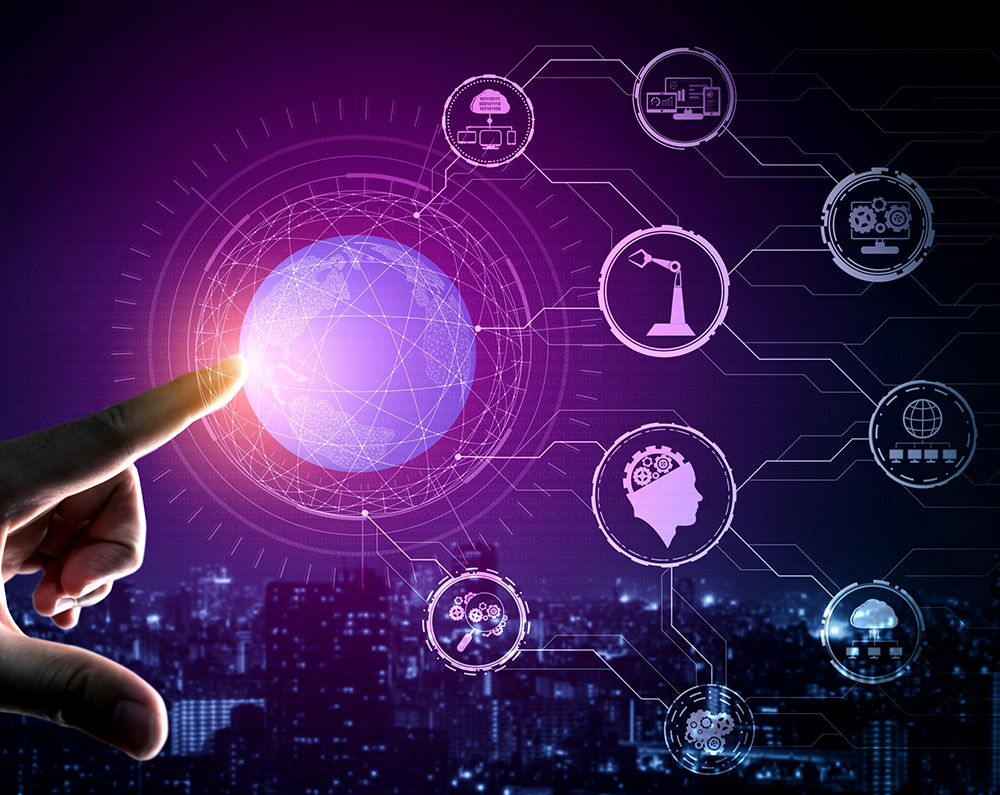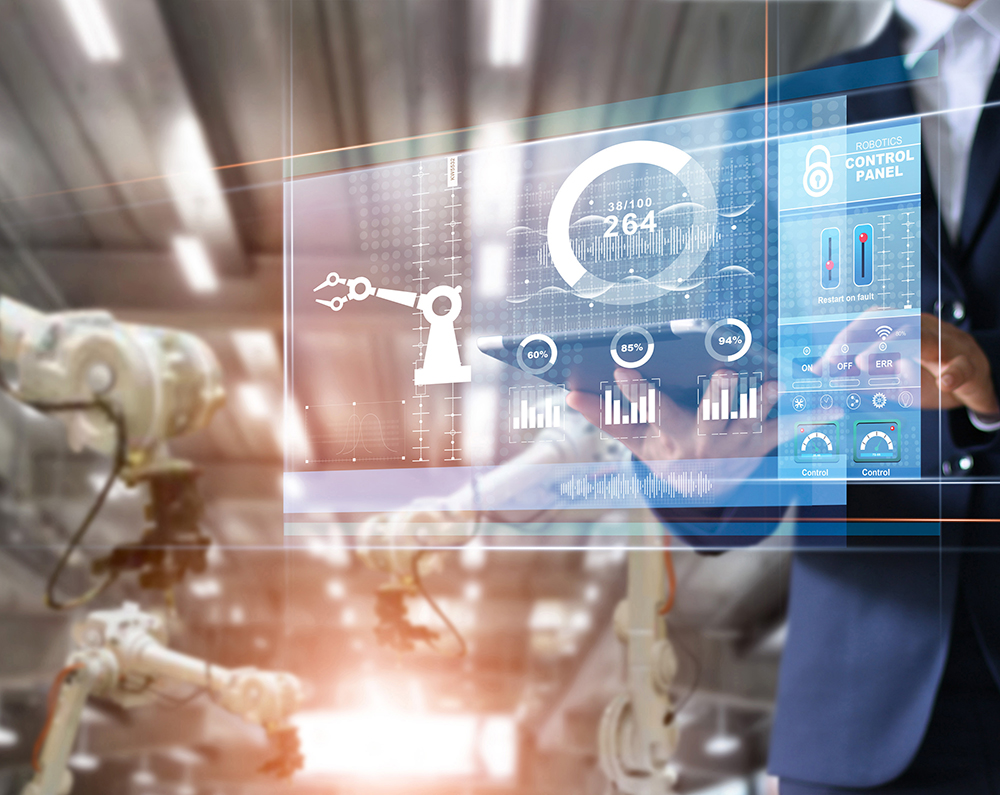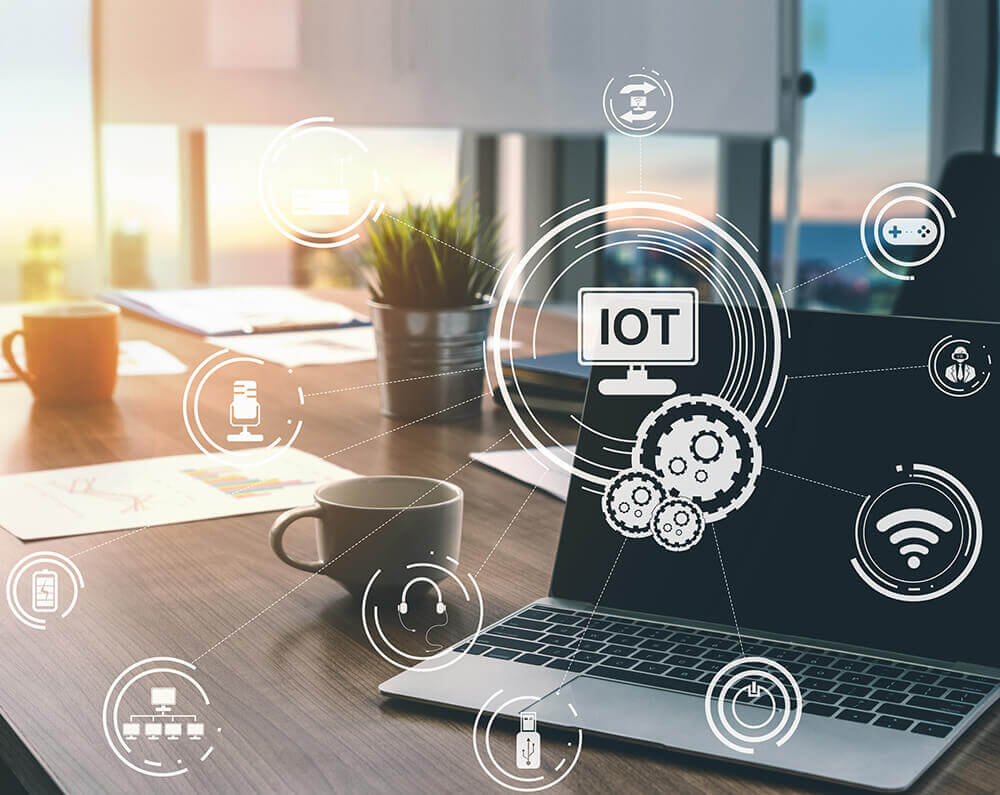
Connect your data to your decision making with IOT
Lowering the costs of production and operations, creating new revenue streams, and increasing customer satisfaction and loyalty are all paths to greater success and profit.

#FocusOnBestPractices
The human population was estimated to be 7.6 billion at the turn of the year, using an estimate 8.1 billion devices connected to the Internet. Leveraging these devices for data and information exchange offers limitless possibilities for growth and efficiency. The Internet of Things or IoT is the interconnection of computing devices embedded in everyday objects, enabling them to send and receive data. Using a broader perspective, IoT is an ecosystem of devices exchanging information, but the possibilities are much richer.
In recent years, IoT has moved from a futurist concept to the central focus area of several industries ranging from manufacturing to retail to healthcare and many more. Let’s look at the top 5 scenarios where IoT can make its impact felt:
Fully automated factories are impossible without robust IoT. Data from sensors on the machines and products needs to be channeled into advanced analytical systems to perform calculations and deliver insights on maintaining acceptable performance and identifying optimization that would otherwise go overlooked. In fact, Amazon has already started automating some of their factories with their famed Packing Algorithm that determines what size package to put your order in to optimize the number of packages they can fit in a delivery truck without having to move anything around. Another simple example would be automatic shutdown of a boiler or turbine when the embedded pressure or temperature sensors send out abnormal signals. Automated factories could eliminate the need for human intervention and cut the cost of operations drastically over time. They could also avoid human error which can sometimes be deadly if a factory uses hazardous materials. The chances of catastrophic worker injury situations are nearly eliminated when a factory is controlled remotely.
When artificial intelligence (AI) is engineered into IoT enabled devices, we can expect a new generation of intelligent robots that autonomously perform tasks in different environments. AI has already been implemented into many aspects of our lives like navigation, Siri, etc. The range of tasks these robots can perform vary across industries and some examples would be automated medical surgeries, construction of buildings, military operations, intelligent network probes and much more.
You might already be into Amazon’s Alexa or a Google Home. These are some of the more popular examples of how internet powered devices are interacting with humans and with other devices in your home like your TV, refrigerator, and lighting through voice commands. In a truly connected home, you can just walk into a room and sensors will automatically switch on the lights to your preferred ambience level. Set the air conditioner to work at your favorable temperature, play your favorite music and even instruct your kitchen hardware to start preparing your perfect cup of coffee. This level of personal comfort and convenience is a result of smarter homes powered by IoT and the future looks set for even more development.
With IoT, hardware can be equipped with sensors that continuously transmit data about their status to centralized data centers or watch towers. When components appear to be faulty, they generate trigger alerts at monitoring centers, allowing engineers to run remote services to repair the machinery or instruct field resources to repair the faulty component. Sensor data can be so precise that powerful analytics can unravel insights about the machines health that were not possible before IoT.
Power grid systems can be overhauled with IoT enabled platforms that rely on data obtained from grid controls. Utilizing this data, intelligent power switching, or reduced load transmission can be triggered automatically, improving the optimization and efficiency of the grid. Predictive maintenance of high power machinery can also be obtained with self-diagnostics using IoT sensors. A combination of technologies like Blockchain and IoT can enable smart grids to work effectively by partnering with suppliers, power companies, individual solar power generating home owners, government or public utility corporations, and much more. Transparent payment options, flexible and accurate measurement and other key integrity measures can also be achieved with such combinations.
Getting the early advantage in implementing emerging technologies is what makes the difference for most organizations. But considering the risks involved in experimenting, you need to have a trusted partner in innovation who can handle the experience of incorporating newer technologies like IoT into your business framework. With over a decade of enabling high-end technology innovation for our customers, Korcomptenz is the ideal partner for your IoT needs. Get in touch with us to learn how you can incorporate IoT into your business today!

Lowering the costs of production and operations, creating new revenue streams, and increasing customer satisfaction and loyalty are all paths to greater success and profit.

The Internet of Things (IoT) is more than the latest buzzword in technology. It’s a real game-changer that can create business value from previously hidden data, especially for manufacturers.

The Industrial Internet of Things, or IIoT as it is more commonly referred to, is the industrial framework that allows the efficient use of IoT devices in various manufacturing and industrial processes.
| Cookie | Duration | Description |
|---|---|---|
| cookielawinfo-checkbox-analytics | 11 months | This cookie is set by GDPR Cookie Consent plugin. The cookie is used to store the user consent for the cookies in the category "Analytics". |
| cookielawinfo-checkbox-functional | 11 months | The cookie is set by GDPR cookie consent to record the user consent for the cookies in the category "Functional". |
| cookielawinfo-checkbox-necessary | 11 months | This cookie is set by GDPR Cookie Consent plugin. The cookies is used to store the user consent for the cookies in the category "Necessary". |
| cookielawinfo-checkbox-others | 11 months | This cookie is set by GDPR Cookie Consent plugin. The cookie is used to store the user consent for the cookies in the category "Other. |
| cookielawinfo-checkbox-performance | 11 months | This cookie is set by GDPR Cookie Consent plugin. The cookie is used to store the user consent for the cookies in the category "Performance". |
| viewed_cookie_policy | 11 months | The cookie is set by the GDPR Cookie Consent plugin and is used to store whether or not user has consented to the use of cookies. It does not store any personal data. |